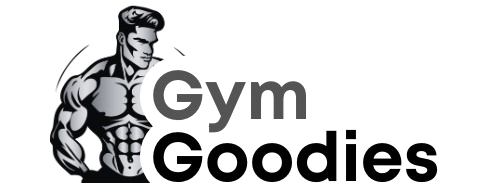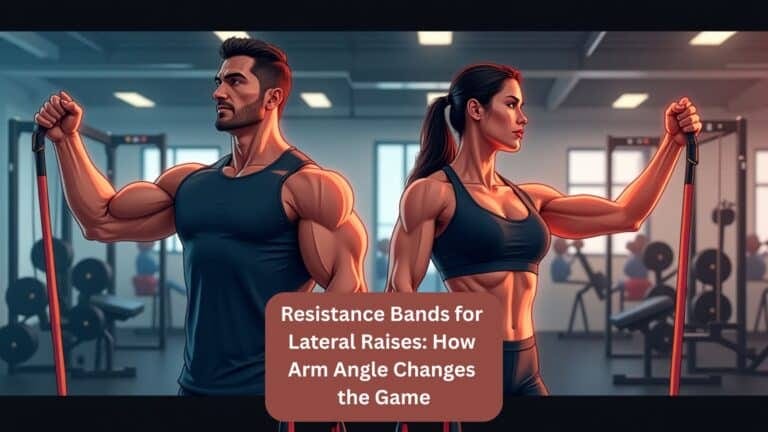The Great Lateral Raise Debate: Does Arm Angle Even Matter?

Ever spent hours doing lateral raises, only to feel your shoulders burn without seeing results? You’re not alone. Many lifters assume this exercise is straightforward, just lift your arms to the side, right? But what if tiny tweaks in your arm angle could make or break your gains?
Turns out, the debate over proper form is hotter than ever. Some trainers swear by a 15° forward angle, others insist on pure abduction (straight out to the sides), and a few even advocate for a slight internal rotation. So who’s right? Let’s settle this once and for all, with science, client stories, and actionable fixes.
The Lateral Raise Struggle: Here’s What’s Really Happening
Your arm angle changes which muscles take over, and most people accidentally shift work away from their side delts.
Your scapular plane, roughly 30–45 degrees in front of your body, is your shoulder’s sweet spot.
In a 2024 study published in the Journal of Strength and Conditioning Research, researchers found that raises performed in the scapular plane (slightly forward from the side) activated the middle deltoid 20% more efficiently than strict lateral or front raises. It also reduced strain on the shoulder joint and minimized upper trap compensation.
This might surprise you, but it makes sense. Your shoulder joint isn’t built to lift directly out to the side. It prefers a slight forward angle where the ball-and-socket mechanism can move smoothly and safely.
Try this 2-minute drill to find your scapular plane:
- Stand tall and relax your arms at your sides.
- Slowly raise them up, not directly to your side, not straight in front, but diagonally in between.
- Notice the spot where your shoulder feels the strongest and most natural? That’s your scapular plane.
Key takeaway: Raising your arms slightly forward (30–45 degrees) improves activation and reduces injury risk.
Most gym-goers blame weak shoulders when lateral raises feel ineffective. But the real issue? Your body cheats. If your form is even slightly off, your traps and front delts steal the show, leaving your side delts (the ones you’re trying to target) underworked.
Client Case Study: Sam’s “Weak Delts” Were a Form Issue
Sam, a client of mine, swore his side delts wouldn’t grow. After filming his form, we noticed his arms flared 30° forward, turning the move into more of a front raise. By adjusting to a neutral (0°) or slightly forward (15°) position, he finally felt his side delts firing, and saw growth in 6 weeks.
The Hidden Factor Everyone Overlooks: Scapular Control
Your shoulder blades dictate whether your delts work, or your traps take over.
A 2024 study in the Journal of Strength and Conditioning Research found that scapular stability (keeping your shoulder blades slightly retracted) increases delt activation by up to 22% during lateral raises. Let your shoulders hike up? Congrats, you’ve turned it into a shrug.
Actionable Tip: The “Wall Slide” Test
- Stand with your back against a wall, arms in a goalpost position (elbows bent 90°, backs of hands on the wall).
- Slide your arms up without letting your shoulders shrug.
- If your shoulders rise, your traps are dominating, focus on keeping them down during raises.
“Elbows Higher Than Wrists” Debunked: Why Cues Can Backfire
The classic cue isn’t wrong, it’s just incomplete.
Many coaches say, “Lead with your elbows!” to prevent wrist-driven momentum. But a 2023 EMG study showed that exaggerating elbow lift can shorten the delt’s range of motion, reducing growth potential. Instead:
Visual Cue: “Pour the Pitcher”
- Imagine holding a pitcher of water at the top of your raise.
- A slight tilt (pouring motion) keeps tension on the delts without over-recruiting traps.
Step-by-Step Fix: Stronger Delts in 4 Weeks
Follow this sequence to isolate your side delts, no cheating allowed.
Phase 1: Prep (Weeks 1–2)
- Activate: Banded lateral walks (10 steps each side) to wake up your glutes and core.
- Form Drill: Seated lateral raises (prevents body English) with a 2-second pause at the top.
Phase 2: Modify (Weeks 3–4)
- If your traps take over: Lean forward 10–15° (increases delt focus).
- If your wrists hurt: Use dumbbells with a neutral grip (thumbs up).
Phase 3: Progress (Week 4+)
- Add 1.5 reps (lower slowly, pause at 90°, explode up) for time under tension.
Final Takeaways
Arm angle matters, but scapular control matters more.
A slight forward tilt (15°) maximizes delt tension for most lifters.
“Lead with elbows” can limit ROM, focus on smooth, controlled motion.
Ready to test it? Grab light weights, try a 0° vs. 15° angle, and see where your delts fire best.
Disclaimer:
It should be remembered that the information available at gymgoodies.net is constantly evolving and is up-to-date and authentic information on fitness, exercises, and health.
I am a veteran bodybuilder, considering I have been active in the industry for quite some time. I ensure that the content shared reflects the lessons I have learned in my years of training and working or all the exposure I have had.
That said, it must be understood that the information available on this portal is obtained through communication channels and is primarily for education and information. Some factors and changes occur, and the issues discussed in this website address such things.
Every piece of advice regarding fitness or health should be taken with caution.
You might need the assistance of fitness professionals, nutritionists, or doctors regarding your workout routine, diet, or fitness activity. Their advice should be personalized PPC, the guide you integrate into your routine, taking into account your specifications and requirements regarding your health and fitness.
This is key, considering our concern is your health and safety. Make sure you only use the data on the site to empower expert advice and nothing more.



